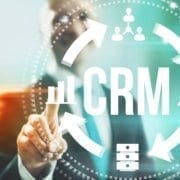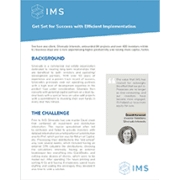CRE Technology Implementation: 7 Tips for Success
Most CRE firms would welcome the chance to increase productivity, efficiency, and effectiveness. But a successful technology implementation can be one of the most daunting challenges a modern business has to face. However, there are key steps that, if followed, should help to proactively address some of these problems and facilitate a streamlined implementation and adoption process.
Perhaps most importantly, take a two-stage approach to new technology: implementation first and then adoption. Often, new technology efforts fail when adoption isn’t equally prioritized. This idea is further solidified in a recent article where HBR asserted that the true ROI of digital investments comes from “collaboration among actively engaged users, smarter decision making, increased sharing of best practices, and sustained behavior change”.
Implementation
In an information technology context, implementation refers to all of the post-sale activities required to get a new technology operating properly within the required systems and processes. Poor planning and execution can slow down implementation and make it that much harder to get employees onboard.
Prioritize Initiatives
Even though a new tool may have functionality applicable to multiple business areas, it’s important to take baby steps. Choose the top one or two areas that could use the most improvement and focus on those first – these are the initiatives that you believe will create real value. Consider both size of business impact and ease of execution when choosing where to focus. Use these same measures to outline future phases beyond initial implementation.
Communicate Change to Key Users
Change is hard; it requires people to embrace the unknown and place trust in a new process or system. Studies repeatedly show that people have a preference for things that have been around longer (i.e. why fix what isn’t broken).
Be sure to communicate the following information with those who will be affected:
- Why you are implementing new CRE technology (i.e. what motivated this initiative)
- The values and benefits you expect to see
- How it will impact different stakeholders
- The timeline for implementation
Also ask for thoughts and questions so that employees can feel more informed and empowered.
Further, according to a study by MIT Sloan Management Review, the most cited obstacle for digital transformation is a lack of urgency. So be sure to also communicate the impact of maintaining the status quo (i.e. failure to adapt new technology and the effects of not improving efficiency sooner). This transparency will contribute to a more seamless transition, as well.
Be Realistic
The roll out should occur over a reasonable time period. Thoroughly understand the scope of change and set a timeline accordingly. This gives users the chance to change and adapt to new processes, as well as to identify and resolve unforeseen roadblocks and challenges.
Leverage Training
Almost every single CRE technology company will offer training and resources on the product and guides to seamlessly implement at your firm. Make sure users attend these sessions and engage with the training material. Also ensure that training is adapted to each user’s learning style and to how they will specifically use the product.
Adoption
In an information technology context, adoption refers to the incorporation, embedding, and ongoing use of a technology in day-to-day business operation and processes. According to HBR, “The real return on digital transformation comes from embedding new work practices into the processes, work flows, and ultimately the culture of organizations.”
Lead by Example
Leverage internal champions and other super-users to promote the technology and encourage use amongst their peers. These champions should be influential employees who you believe can effectively promote horizontal change. They should not only be frequent and active users but also believers in the technology, its potential, and its value.
Develop Processes
New practices should be institutionalized. Outline and document any new processes using or impacted by the CRE technology. Test these processes to identify any hiccups you may not have anticipated. Also be sure to incorporate this material into HR practices, such as new hire training, employee reviews, and team KPIs.
Track Metrics
What are the measures for success for the new technology? These goals are how you will hold the team accountable to actually using the product in their day to day, how you will maintain adoption momentum, and ultimately how you will generate ROI. Consider, too, metrics for usage vs adoption, where ‘usage’ refers to using the technology to complete necessary tasks and where ‘adoption’ refers to leveraging the technology to achieve key business outcomes.
As MIT Sloan Management Review says, “Adopt new technologies effectively or face competitive obsolescence”. Many new technologies are no longer “nice to haves” but rather “must haves”, especially in an industry such as commercial real estate where digital innovation was pushed off for as long as possible. Now it may feel as if you are playing catch-up, as you try to drive efficiencies as quickly as possible.











